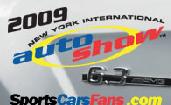First Drive: 2010 Acura TSX V6

Acura has a good thing going in the luxury segment. Unlike Mercedes-Benz, BMW, and Audi – but like Lexus – Acura's best selling car is not its entry-level model: Acura moves more TLs than anything else in its line-up. And unlike those other brands, Lexus included, all of Acura's offerings carry five-star safety ratings from NHTSA, are rated as top safety picks by the IIHS, and the Automotive Lease Guide has declared that Acura offerings have the best resale value among luxury brands. Now, Honda's premium division has grown by one with the addition of the TSX V6, and Autoblog was invited to find out if the new, more powerful sedan could keep the brand's good thing going.
The TSX V6 was engineered to fill the gap between the four-cylinder TSX and the relatively new TL. With the latest TL having gone upmarket in several areas, Acura felt there was enough space between its entry and mid-market lines to offer a stepping stone between the two. But this wasn't strictly about plopping a V6 into a TSX and adding some bigger digits after the dollar sign. According to officials, this car is about creating a more comprehensively sporting version of the TSX, yet one that wouldn't trod on the bumper of the TL.
If you're familiar with the 2009 TSX that was introduced last year, then you're up-to-speed on the TSX V6's exterior; there were essentially no changes made to the car beyond larger wheels, a V6 badge on the trunk and a different compound on the rear brakes. Even the dual tailpipes are the same size on both cars, and there are no interior changes – not one – to differentiate the four-pot from the sixer. Acura decided the V6's buyers were looking for sport package identity, they simply wanted more power. So, as with the bionic man, this is an operation to be felt, not seen.



But in Acura's estimation, this is also a car meant to truly compete with the A4, 3 Series, and C-Class. The 2.4-liter four-cylinder in the base TSX has 201 horsepower and 170 lb-ft of torque, leaving it ten horses and 88 lb-ft down versus Audi's 2.0-liter four. The 3.5-liter V6 in the TSX boosts its numbers to 280 hp and 254 lb-ft, giving it better outputs than the sixers in the Mercedes C350 and Audi A4 3.2, figures bested only by the BMW 335i – and it shades all of them by a hair in the fuel consumption stakes.
As stated, Acura didn't do anything to the interior, but it still deserves mention. Overall, the inside offers a placid view and the designers have done a good job of providing visual variety. There are plenty of contrasting curves, overlaid with four different plastics treatments throughout and perforated leather inserts in the doors. It won't grab you by the heart when you take a seat, but it ought to age well – a trait that seems too rare in the luxury segment. (something that would go some way toward explaining that resale value...)
The seats remain wide and comfy. Strikingly, compared to the skinny seatbacks becoming au courant among smaller luxury cars, the side of the seat is thicker than a brick wall. Rear legroom doesn't appear to be compromised since it's only the bolsters that create the bulk, but it did come as a surprise.
As for another detail of the interior: we appear to be alone in this, but the dash feels awash in buttons. The steering wheel has 11 buttons on it, seven of them multi-function. The center stack is a button convention with two multi-function knobs as special guests. We're sure it wouldn't take much to adapt and find our go-to buttons, but the initial cockpit survey leads us to think Airbus, not Acura.
Still, none of that is any deterrent to enjoying the car. Besides, in this league, it's the driving that counts.
Acura's assertion that this wasn't just about more power but about creating a sportier car is backed up in every way. In our review of the four-cylinder TSX, the engine was said to be "sufficient, but still lacks real grunt," and the car was described as doing "its job without much fuss, but never gets your adrenaline pumping."
Not so in the TSX V6. Although the V6 model gains an additional 194 pounds, the additional horsepower and torque offsets the extra poundage. Lay on the gas from a stop in the base TSX and the car aspires to action. In the V6, you only get the action.

The new coil springs and damper settings fore and aft do a terrific job of keeping road harshness away from cabin occupants. They're aided in the quest for cabin quietude by electronically controlled engine mounts and a feature only available on the V6: Active Sound Control (ASC), a noise cancellation system that filters out certain frequencies.
If you tell a group of automotive scribes that you've engineered a sedan for sporty performance and let them loose in twisties, they will, without fail, beat the bejeezus out of it to redline, smoking brakes and beyond, then compare it to the platonic ideal of a rear-drive BMW. Put through that tried-and-true test, the front-drive Acura fares well. Going hot and heavy into a hairpin will get you a serving of understeer and a flashing yellow triangle while the traction control works to keep the ship righted. But we were delighted to find that the flashing yellow light was the most intrusive part of the TC – no piercing whistles, no dominatrix-like clampdown on the brakes, no sudden wondering "Where did the power go?" It was always just enough to keep you going over the road and not over the cliff.

The electronic power steering returned decent feedback. Most importantly, we always knew where to put the wheel when planning a line, and corrections weren't necessary when we laid the course. The suspension kept to its tasks just as well when flying as it did at town speeds, keeping all the wheels where they needed to be even as the car was squatting and flicking to stay in its lane. The brakes did get tired a bit early. They were fine all the way up and over the mountain, but there was a gradual yet noticeable fade while plugging through corners. Not surprisingly, when we exited the car, the tangy scent of hot brakes was heavy in the air.
However, few of this TSX's drivers will ever belt this car like it's a Belmont Stakes runner. And if you are looking for a ride to do your Crank imitation of Jason Statham... you shouldn't be looking at a TSX anyhow.

Back here on Earth, and off the Hollywood set, the TSX V6 comes good with just about everything you'd want from it. The drive-by-wire throttle that feels like instant-on acceleration at low speeds loosens up nicely on the trot. The five-speed automatic (no manual option on this car) knows its gears and isn't afraid to kick down, and the extra power pulls the TSX nicely out of apexes. Even though there's a manual shifting mode with paddles on the steering wheel, we barely used it and rarely called on peak horsepower. The latter doesn't come on until 6,200 rpm, just 700 rpm shy of the redline, and at that height, even the ASC can't keep the cabin from becoming vociferous.
The grabby brakes loosen up as well – which is as much down to fade as anything else when it's really hard going. But maintain a rhythm, don't stab at the stoppers like a serial killer, and they'll serve you well.
In short: drive this car like it's a TSX with more power and better dynamics – not like it's a Lotus Elise – and you'll get a fabulously put together package that comes standard with a bucket of kit. If you want a TSX with more power, you've got that and more with this model. And if you're looking for an Acura that handles enthusiastically enough to seriously play on the same pitch as the three gatekeepers of the entry-level premium segment (3, C, and A), here you are. And you'll get it for less coin than those other cars: base base MSRP is $34,850 plus $810 destination and, if you're game, $3,100 for the Technology Package. That money will also save you money: you'll get better gas mileage than those other cars as well.
[Source: Autoblog]















